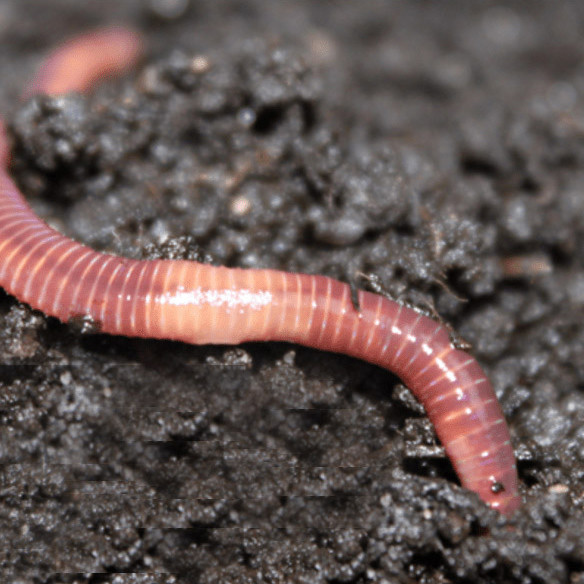Reliable red worms: Best practices for beginners
Reliable red worms: Best practices for beginners
Blog Article
Using Red Wigglers for Reliable Organic Garbage Disposal
The use of red wigglers for natural waste disposal offers a compelling approach to taking care of food scraps while promoting ecological sustainability. These worms not just improve waste disintegration however additionally produce beneficial worm spreadings, which can substantially boost dirt health and wellness. Their capacity to refine big quantities of natural product with minimal initiative placements them as an accessible service for households and neighborhoods alike. Nonetheless, recognizing the nuances of establishing up an effective worm bin and keeping an optimal environment is essential for maximizing their advantages. The next actions in this process might amaze you.
Benefits of Using Red Wigglers
One of the most engaging advantages of using red wigglers for organic garbage disposal is their amazing performance in composting. These worms, scientifically understood as Eisenia fetida, are particularly adjusted for breaking down natural materials, enabling them to refine waste up to twice their body weight daily. This quick decomposition not only speeds up the composting process yet likewise creates nutrient-rich worm castings that dramatically enhance soil quality.
Furthermore, red wigglers add to a decrease in garbage dump waste. By diverting organic materials from landfills, they assist reduce methane emissions-- a potent greenhouse gas. This environmental benefit is critical in the battle against climate adjustment.
Furthermore, red wigglers are low-maintenance and can thrive in various environments, making them accessible for both amateur and knowledgeable composters. Their capability to replicate quickly guarantees a steady population, helping with recurring waste handling.
Establishing Your Worm Container
Developing an efficient worm container is essential for optimizing the benefits of composting with red wigglers. Ensure the container has appropriate drain openings to stop excess moisture, as red wigglers prosper in a wet however not soggy setting.
(red wigglers eisenia fetida)Following, prepare the bed linen product, which acts as the worms' habitat and food source. Shredded paper, cardboard, and coconut coir are superb alternatives. Goal for a bed linen deepness of around 4 to 6 inches. The bin must be positioned in a dark, temperature-controlled area, ideally between 55 ° F and 77 ° F, to keep worm task.
As soon as the bin is established up, introduce the red wigglers, allowing them to accommodate to their new setting. A well-kept bin will not just sustain the wellness of the worms however additionally promote effective decay of organic waste.
(Lake Rhodhiss Bait)
What to Feed Red Wigglers
An understanding of the appropriate diet plan for red wigglers is vital for maintaining a healthy and balanced worm populace and enhancing composting efficiency. These products not only supply necessary nutrients however likewise add to the wetness equilibrium within the worm container.
It is critical to prevent particular foods that can damage the worm populace. Red wigglers need to not be fed meat, milk items, oily foods, or processed things, as these can bring in pests and create undesirable odors. red wigglers. In addition, citrus fruits and hot foods must be reduced, as their level of acidity can be harmful to worms
Keeping track of the worm container for food consumption rates will certainly assist guarantee that red wigglers are getting an appropriate diet regimen while keeping an efficient composting setting. Appropriate feeding techniques are vital for fostering a thriving ecosystem within the worm container.
Preserving Your Worm Habitat
A properly maintained worm environment is necessary for the health and productivity of red wigglers. To make certain optimum problems, it is important to keep track of temperature level, moisture, and oygenation within the worm bin. Red wigglers grow in a temperature level series of 55 to 77 levels Fahrenheit. Surpassing this array can worry the worms, so it's essential to place the bin in an appropriate place away from straight sunlight and severe temperature levels.
A great regulation of thumb is to keep wetness at roughly 70% to 80%. If the bedding ends up being also wet, it can lead to anaerobic conditions that are damaging to the worms.

Using Worm Spreadings in Gardening
Rich in nutrients and advantageous microorganisms, worm spreadings offer as a phenomenal organic plant food for horticulture. Produced with the gastrointestinal procedures of red wigglers, these spreadings have a range of important nutrients, consisting of nitrogen, phosphorus, and potassium, which promote durable plant growth. Unlike artificial plant foods, worm castings use a slow-release mechanism, guaranteeing that nutrients are available to plants over an extended period, thereby decreasing the risk of nutrient leaching and dirt deficiency.
Along with vitamins and mineral material, worm castings enhance soil structure and oygenation, improving wetness retention and drainage. The microbial life present in worm spreadings aids to Your Domain Name subdue microorganisms and promotes a healthy and balanced dirt environment, further benefiting plant health. When included into the soil or used as a top clothing, worm spreadings can substantially boost seed germination prices, root advancement, and general plant vigor.
For optimal outcomes, garden enthusiasts must apply worm spreadings at a price of 1-2 inches per square foot, blending them right into the soil or integrating them into potting blends. Overall, using worm castings is an environment-friendly strategy to improving dirt fertility and making sure flourishing garden atmospheres.
Verdict

Report this page